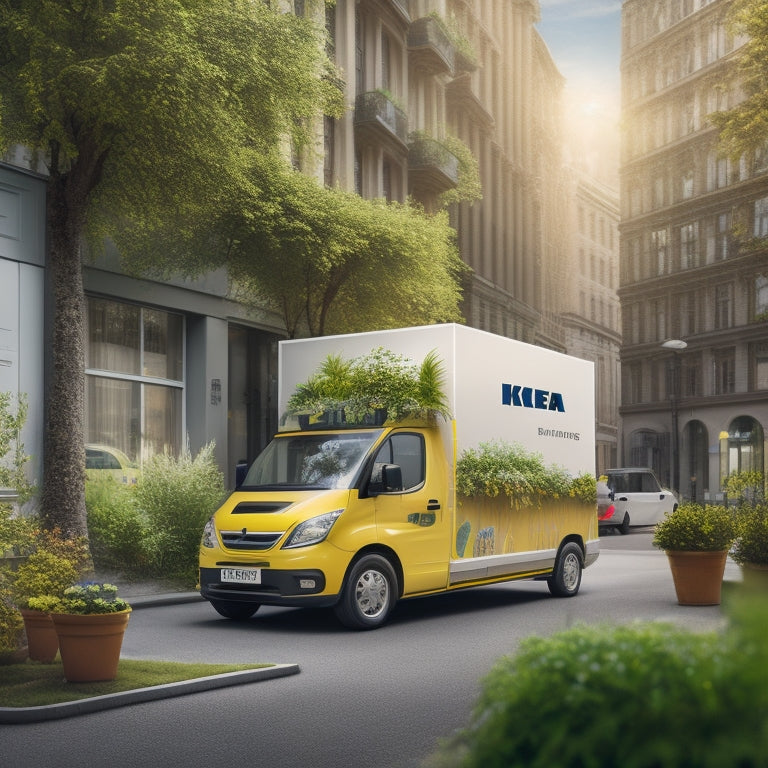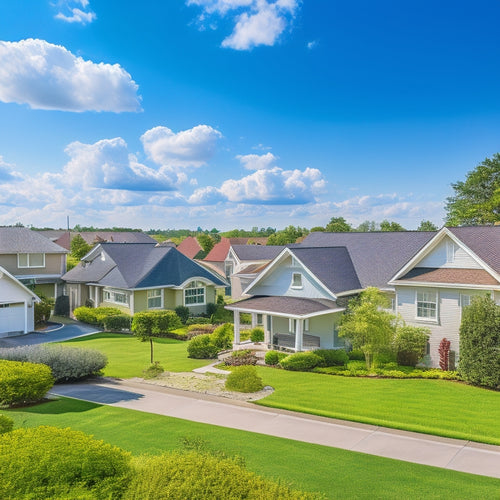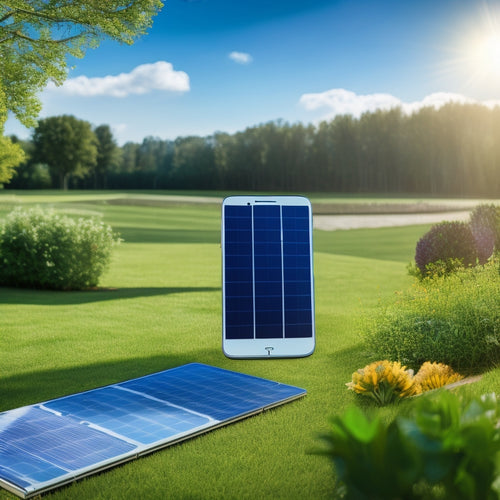
IKEA's Revolutionary Shift: Electric Last-Mile Deliveries
Share
IKEA is revolutionizing last-mile deliveries by committing to electrify its entire fleet by 2025, greatly reducing transportation carbon emissions and aligning with its broader sustainability goals. This shift is expected to pave the way for a cleaner, more environmentally friendly future. Collaborations with logistics partners like DHL, UPS, and PostNord will accelerate electric vehicle adoption and drive sustainable logistics practices. IKEA's vision for a zero-emission fleet sets a precedent for eco-friendly logistics, and its commitment to electric last-mile deliveries will have a profound environmental impact. As IKEA continues to push the boundaries of sustainable logistics, the future of clean transportation looks brighter than ever.
Key Takeaways
• IKEA aims to electrify last-mile deliveries by 2025, significantly reducing transportation carbon emissions and aligning with its broader sustainability goals.
• Collaborations with logistics partners like DHL, UPS, and PostNord accelerate electric vehicle adoption and drive sustainable logistics practices.
• IKEA's goal for electric last-mile deliveries by 2025 promotes green mobility and sets a precedent for eco-friendly logistics.
• The strategy is expected to pave the way for a cleaner, more sustainable future, reducing IKEA's carbon footprint and enhancing the customer experience.
• IKEA's commitment to electric last-mile deliveries will significantly impact the environment, contributing to a cleaner transportation future.
Electric Vehicle Ambitions
As IKEA sets its sights on electrifying last-mile deliveries, the company's dedication to having electric vehicles deliver the last-mile portion of all product shipments by 2025 underscores its ambition to markedly reduce transportation carbon emissions.
This bold move is a vital step towards mitigating the environmental impact of its logistics operations. By adopting electric vehicles, IKEA can greatly decrease its carbon footprint, aligning with its broader sustainability goals.
The company's electric vehicle adoption strategy is expected to have a profound impact on the environment, paving the way for a cleaner, more sustainable future.
Sustainable Logistics Partnerships
Through strategic collaborations with logistics partners, IKEA is able to leverage their expertise and resources to accelerate the adoption of electric vehicles in last-mile deliveries.
By partnering with companies like DHL, UPS, and PostNord, IKEA can tap into their knowledge and infrastructure to drive sustainable logistics practices.
These eco-friendly collaborations are essential in reducing carbon emission reductions and promoting green logistics.
By working together, IKEA and its partners can optimize routes, reduce fuel consumption, and increase the use of electric vehicles, ultimately contributing to a more sustainable transport system.
This approach not only benefits the environment but also enhances the overall customer experience, demonstrating IKEA's commitment to serving others through sustainable practices.
Clean Transportation Future
By 2025, IKEA is poised to revolutionize the logistics industry with its dedication to electric last-mile deliveries, paving the way for a clean transportation future. This ambitious goal is a vital step towards reducing carbon emissions and creating a more sustainable urban environment through urban electrification.
By shifting to electric vehicles, IKEA is embracing green mobility and setting a precedent for eco-friendly logistics. The company's vision for a zero-emission fleet is a beacon of hope for a cleaner, healthier future.
As IKEA continues to push the boundaries of sustainable logistics, it's clear that their commitment to electric last-mile deliveries will have a significant impact on the environment and inspire others to follow suit.
Frequently Asked Questions
How Does IKEA Plan to Charge Its Electric Delivery Vehicles?
IKEA's electric vehicle charging strategy relies on collaboration with partners to develop extensive station infrastructure, ensuring predictable and efficient vehicle charging, thereby reducing emissions and supporting a sustainable transportation network.
What Percentage of Ikea's Delivery Fleet Is Currently Electric?
As IKEA expands its fleet, currently, the exact percentage of electric vehicles is undisclosed. However, with green initiatives driving their strategy, the company is committed to 100% electric last-mile delivery by 2025, ensuring a significant shift towards a sustainable fleet expansion.
Will Ikea's Electric Vehicle Goals Affect Product Pricing?
As companies like DHL aim for 70% clean transport modes by 2025, IKEA's electric vehicle goals may not notably impact product pricing, as cost savings from lower maintenance and operational costs offset the potential green premium.
How Will IKEA Handle Electric Vehicle Battery Recycling?
To address battery recycling, IKEA must prioritize battery safety and explore recycling incentives, such as partnering with recycling facilities and offering take-back programs, to guarantee responsible end-of-life management of electric vehicle batteries.
Can Customers Request Electric Vehicle Delivery for Their IKEA Orders?
As customers increasingly prioritize sustainability, IKEA could offer a 'Green Choice' option, allowing customers to request electric vehicle delivery, promoting a reduced carbon footprint and empowering consumers to make environmentally conscious decisions.
Related Posts
-

What Cool Roof Tax Breaks Can Homeowners Claim?
You can claim federal tax credits of up to $500 and state and local incentives for installing cool roofs, which not o...
-

Green Deck Options: Earth-Conscious Choices for Your Home
You're looking for a deck that not only enhances your home's exterior but also aligns with your eco-friendly values. ...
-

7 Best Solar Panel Upkeep Apps for Homeowners
You can optimize your solar panel's energy output and efficiency by up to 20% with regular maintenance, which is wher...


